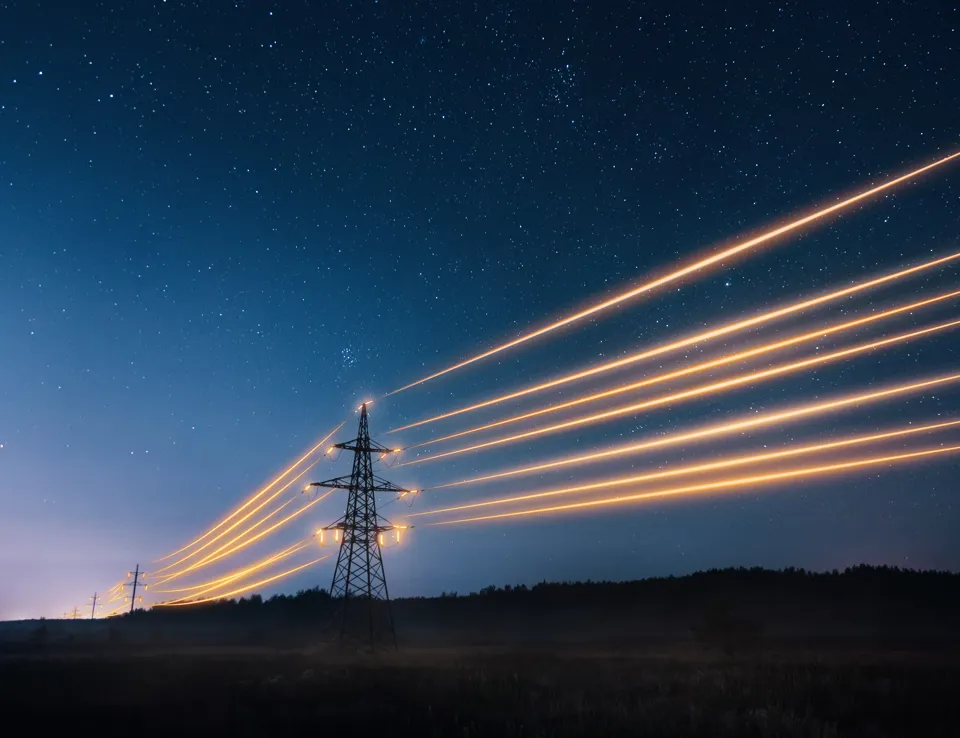Energy Hubs: opportunities and challenges from a clean power perspective
Amidst the challenges of achieving a deep and just energy transition, the deployment of renewable power in countries and regions such as the UK, Germany, the Nordics and Iberia stands out as a major decarbonisation victory. As an example, in just over a decade, the contribution of wind power to the UK's electricity mix has almost doubled, rising from 15% in 2013 to a record 29% in 2024. According to the UK’s National Energy System Operator (NESO), wind was the single largest source of power on 30% of days last year. In Spain, solar power generated almost 20% of the country’s power demand in 2024 and on sunnier days, it can combine with wind to regularly meet over two-thirds of the country’s total electricity demand.
As positive as this is, this success also highlights two critical challenges. One – which has even achieved public awareness – is the issue of intermittency: 'what happens when the wind doesn’t blow?'. The second challenge is curtailment as it places a ceiling on maximum potential renewables penetration – however this has only recently reached public awareness through articles highlighting the magnitude of constraint payments paid to power generators. This cost, which is recovered through consumer electricity bills, reached over £1.2Bn for the UK in 2024. This comprises over £390M paid directly to curtail the power generated by wind assets, with the remainder paid to sources of power generation nearer to the demand to compensate for the power which the grid cannot transmit. This ‘top up’ power is typically fossil fuel derived, thus introducing a decarbonisation penalty in addition to a financial one.
In a power system which hasn’t been designed for large-scale, decentralised generation and in an environment where the ability to provide access to reliable low-cost power is important for economic growth, how do we manage the challenges of intermittency and curtailment so the primary driver of decarbonisation – large-scale clean power generation – can maintain its rate of deployment? The impressive roll-out of stand-alone utility Battery Energy Storage Systems (BESS), as witnessed in the UK and Germany, is an unquestionably positive step forward but to achieve national targets for decarbonisation in a cost competitive and sustainable manner requires a more integrated, system-based approach. Alongside power grid evolution, this would enable the continued deployment of renewable power generating capacity to decarbonise national energy systems.
Energy Hubs and the factors defining their growth
An Energy Hub is a co-located system that integrates multiple clean power sources to either supply a specific high-demand user or act as a balancing mechanism for the wider grid. Traditionally, these high-demand users have been industrial clusters seeking to decarbonise hard-to-abate processes. In these cases, diversified emissions sources have encouraged hubs to consider converting clean electrons into molecules, for example, producing green hydrogen or its derivatives. These Energy Hubs are slowly forming in areas where geographical and economic factors are complimentary, with requirements being:
Access to low-cost large scale clean power
Low energy costs enhance the global competitiveness of national economies and support a just transition for its population. It is therefore important that large-scale renewable power is generated in regions where high-capacity factors, such as the UK offshore environment, mean it can be achieved at the lowest possible cost of production. Energy hubs can be an aggregator of this clean power in those regions, and can naturally minimise the challenges of intermittency with on-site BESS conditioning the power supply thereafter.
These power sources do not require co-location on-site, and to achieve scale, it is often better that they are not, such as in the case of offshore wind. But they do require a connection to the Energy Hub via dedicated transmission lines to mitigate rather than compound current grid capacity challenges.
Availability of an anchor offtake
The primary benefit of an Energy Hub is its ability to couple together complimentary sectors, where the output of one process or system can be an input to another. In the earlier example of an Energy Hub producing large quantities of green hydrogen, this could in-turn be used as a feedstock for co-located green steel production. In most cases, the offtake source is already established and seeking to decarbonise, thus the Energy Hub is ideally formed around this industrial cluster to limit additional costs associated with product transport on an already cost-premium product.
Another advantage of the industrial cluster approach is their proximity to deepwater ports providing products a route to international markets. This export option provides another commercial opportunity, as areas of low-cost clean power producing green commodity products – such as steel or ammonia – can satisfy demand in regions which do not have enough clean power to produce indigenous clean products competitively.

Infrastructure
The availability of, and ability to put in place, the infrastructure necessary to develop an Energy Hub is an important aspect of its composition. In regions where there is great clean power potential, but it is not co-located with an anchor offtake, the prospective developer might consider a virtual hub concept: where the process blocks are not contained within a centralised system. Such Energy Hub concepts have developed in the Middle East, Australia and the US. What must be considered in these scenarios is the route to achieving the lowest levelized cost of production. For instance, if there is a large distance between the source of low-cost clean power generation and the offtake product, a site-specific assessment should determine if the electrolyser necessary to produce green hydrogen should be located adjacent to the clean power generation with a pipeline to the offtake, or if the hydrogen should be produced locally to the offtake and power is moved via dedicated transmission lines. This is a challenge primarily of technoeconomic modelling and optimisation, but also presents challenges in implementation, such as large-scale hydrogen storage and the feasibility of installing pipelines versus high voltage infrastructure in the environment.
What power-focused services can an Energy Hub provide?
While the ultimate objective of Energy Hub concepts is sector coupling, a power-focused hub can also provide complimentary services by intelligently managing the electrons. There are two major categories of service the Energy Hub can provide in this scenario: services to the power grid for stability, and the direct electrification of co-located demand.
Power grid services
Aggregating power from multiple renewable sources into a single energy hub can have a natural damping effect on intermittency, as different assets generate power at different times and magnitudes. This capability can be enhanced further through the deployment of large-scale BESS, enabling reactive services that are increasing in demand as traditional sources of mechanical inertia are retired.
- Synthetic Inertia and Frequency Response: An energy hub provides two distinct but related services. First, its inverters can provide synthetic inertia, which act as a shock absorber by resisting instantaneous changes in grid frequency during disruption. This allows time for the second service, frequency response, to take effect. This is where the hub actively injects or absorbs power in milliseconds to correct any frequency deviation, restoring grid stability and preventing potential blackouts.
- Arbitrage & Constraint Management: The hub stores electricity during periods of excess renewable supply when prices are low and transmission lines are congested. It then sells this stored energy back to the grid when demand is higher and the grid has capacity.
These services do not seek to transmit bulk power across a region, but instead support a reliable and resilient local grid, enabling a greater proportion of renewables to be introduced safely.
Direct electrification of co-located demand
An Energy Hub can provide reliable, clean power directly to a large energy consumer, such as a data centre.
According to the International Energy Agency (IEA), global data centre electricity demand is forecast to more than double by 2026, potentially exceeding 1,000 TWh. This demand, combined with the 24/7 operation of data centres, presents a challenge to decarbonisation efforts. As national governments compete to attract data centre investment, economies must demonstrate that they can offer reliable, resilient, and cost-competitive clean power. For that, integration with Energy Hubs is critical.
Challenges to developing Energy Hubs
The benefits of Energy Hubs are clear, however their implementation is challenging, particularly in demonstrating the "bankability" required to secure financing.
- Offtake uncertainty: Whilst the ‘route to market’ of a power-focussed Energy Hub is clear, a consensus is yet to be reached on the most appropriate route to decarbonise certain hard-to-abate sectors and how that will be funded. Similarly, for products such as ammonia where a large market already exists, doubt remains about the short-term incentive to carry a green premium in the cost of production. Demand-side incentives may be required to offer certainty and direction.
- Supply chain: For a development of this scale, there are significant bottlenecks for critical hardware such as electrolysers, batteries, inverters, and high-voltage transformers. This leads to price and schedule volatility, which introduces risk and makes securing investment more difficult.
- Commercial framework uncertainty: A hub’s revenue depends on offtake price competitiveness and the market’s willingness to pay, energy arbitrage and a suite of ancillary grid services. Many of these markets are not yet mature. Policies will evolve, and the fluctuating prices and rules governing these services create uncertainty, making it difficult for developers to secure long-term financing.
- Aligning partnership interests: An energy hub requires collaboration between multiple parties, such as offtakers, renewable generators, battery operators and investors. Aligning the commercial interests and risk appetites of this broad stakeholder group within a complex joint venture is a major challenge, especially when navigating macroeconomic pressures and planning regulations.
Conclusion
The successful development of energy hubs will be one of the defining engineering and economic challenges of our time. While great uncertainty exists around the policy, regulatory, and commercial environments for their implementation, they are an essential component for unlocking the full potential of renewables and realising the global decarbonisation aspirations.
Beyond enabling cleaner energy, they provide security and resilience by diversifying supply and creating backup pathways, while offering flexibility to balance fluctuating renewable generation with storage and conversion options. By optimising energy flows across sectors, hubs improve efficiency, cut costs and reduce dependence on fossil fuel imports, at the same time creating local economic value through new infrastructure, jobs and innovation. Their scalable design also ensures they can evolve alongside future demand and technology advancements, making them a cornerstone of a reliable, low-carbon energy system. To achieve this, priority must be given to establishing stable frameworks that manage risk, attract investment, and foster the innovation required to build the grid of the future.










